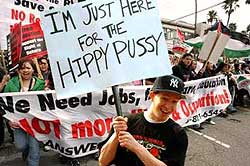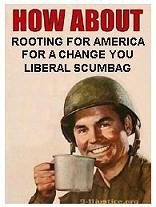.....In the Sacramento and San Joaquin Valley "Interior Areas" of California.
Do diversity concerns, as in lack of diversity, work both ways? Over a hundred-mile stretch, when I stopped in San Joaquin for a bottled water, or drove through Orange Cove, or got gas in Parlier, or went to a corner market in southwestern Selma, my home town, I was the only non-Hispanic — there were no Asians, no blacks, no other whites. We may speak of the richness of “diversity,” but those who cherish that ideal simply have no idea that there are now countless inland communities that have become near-apartheid societies, where Spanish is the first language, the schools are not at all diverse, and the federal and state governments are either the main employers or at least the chief sources of income — whether through emergency rooms, rural health clinics, public schools, or social-service offices. An observer from Mars might conclude that our elites and masses have given up on the ideal of integration and assimilation, perhaps in the wake of the arrival of 11 to 15 million illegal aliens.And that's not just the people, it's the nature of how the rule of law no longer applies across the board:
Again, I do not editorialize, but I note these vast transformations over the last 20 years that are the paradoxical wages of unchecked illegal immigration from Mexico, a vast expansion of California’s entitlements and taxes, the flight of the upper middle class out of state, the deliberate effort not to tap natural resources, the downsizing in manufacturing and agriculture, and the departure of whites, blacks, and Asians from many of these small towns....
Many of the rural trailer-house compounds I saw appear to the naked eye no different from what I have seen in the Third World. There is a Caribbean look to the junked cars, electric wires crisscrossing between various outbuildings, plastic tarps substituting for replacement shingles, lean-tos cobbled together as auxiliary housing, pit bulls unleashed, and geese, goats, and chickens roaming around the yards. The public hears about all sorts of tough California regulations that stymie business — rigid zoning laws, strict building codes, constant inspections — but apparently none of that applies out here.
It is almost as if the more California regulates, the more it does not regulate. Its public employees prefer to go after misdemeanors in the upscale areas (like talking on your cell phone or too many trans fats in upscale restaurant food) to justify our expensive oversight industry, while ignoring the felonies in the downtrodden areas, which are becoming feral and beyond the ability of any inspector to do anything but feel irrelevant. But in the regulators’ defense, where would one get the money to redo an ad hoc trailer park with a spider web of illegal bare wires?
Many of the rented-out rural shacks and stationary Winnebagos are on former small farms — the vineyards overgrown with weeds, or torn out with the ground lying fallow. I pass on the cultural consequences to communities from the loss of thousands of small farming families. I don’t think I can remember another time when so many acres in the eastern part of the valley have gone out of production, even though farm prices have recently rebounded. Apparently it is simply not worth the gamble of investing $7,000 to $10,000 an acre in a new orchard or vineyard. What an anomaly — with suddenly soaring farm prices, still we have thousands of acres in the world’s richest agricultural belt, with available water on the east side of the valley and plentiful labor, gone idle or in disuse. Is credit frozen? Are there simply no more farmers? Are the schools so bad as to scare away potential agricultural entrepreneurs? Or are we all terrified by the national debt and uncertain future?
California coastal elites may worry about the oxygen content of water available to a three-inch smelt in the Sacramento–San Joaquin River Delta, but they seem to have no interest in the epidemic dumping of trash, furniture, and often toxic substances throughout California’s rural hinterland. Yesterday, for example, I rode my bike by a stopped van just as the occupants tossed seven plastic bags of raw refuse onto the side of the road. I rode up near their bumper and said in my broken Spanish not to throw garbage onto the public road. But there were three of them, and one of me. So I was lucky to be sworn at only. I note in passing that I would not drive into Mexico and, as a guest, dare to pull over and throw seven bags of trash into the environment of my host.
In fact, trash piles are commonplace out here — composed of everything from half-empty paint cans and children’s plastic toys to diapers and moldy food. I have never seen a rural sheriff cite a litterer, or witnessed state EPA workers cleaning up these unauthorized wastelands. So I would suggest to Bay Area scientists that the environment is taking a much harder beating down here in central California than it is in the Delta. Perhaps before we cut off more irrigation water to the west side of the valley, we might invest some green dollars into cleaning up the unsightly and sometimes dangerous garbage that now litters the outskirts of our rural communities.
We hear about the tough small-business regulations that have driven residents out of the state, at the rate of 2,000 to 3,000 a week. But from my unscientific observations these past weeks, (for the illegal aliens) it seems rather easy to open a small business in California without any oversight at all, or at least what I might call a “counter business.” I counted eleven mobile hot-kitchen trucks that simply park by the side of the road, spread about some plastic chairs, pull down a tarp canopy, and, presto, become mini-restaurants. There are no “facilities” such as toilets or washrooms. But I do frequently see lard trails on the isolated roads I bike on, where trucks apparently have simply opened their draining tanks and sped on, leaving a slick of cooking fats and oils. Crows and ground squirrels love them; they can be seen from a distance mysteriously occupied in the middle of the road.
At crossroads, (typically illegal alien) peddlers in a counter-California economy sell almost anything. Here is what I noticed at an intersection on the west side last week: shovels, rakes, hoes, gas pumps, lawnmowers, edgers, blowers, jackets, gloves, and caps. The merchandise was all new. I doubt whether in high-tax California sales taxes or income taxes were paid on any of these stop-and-go transactions.












No comments:
Post a Comment